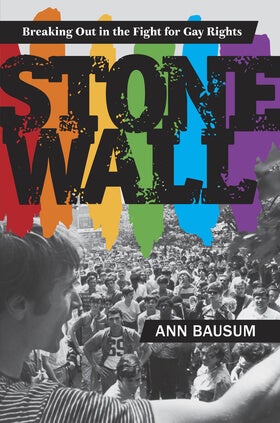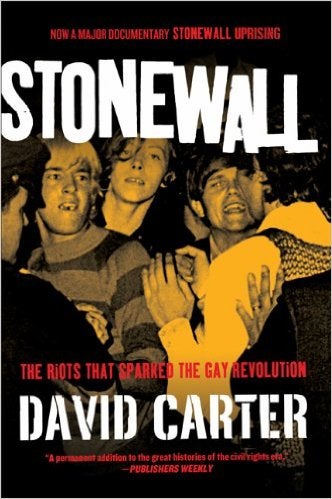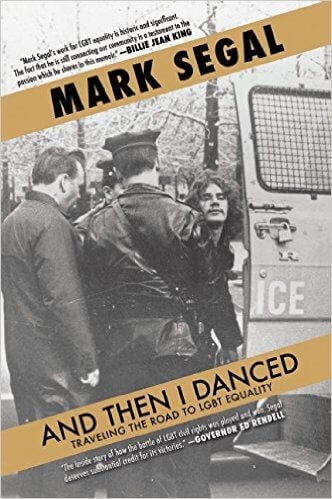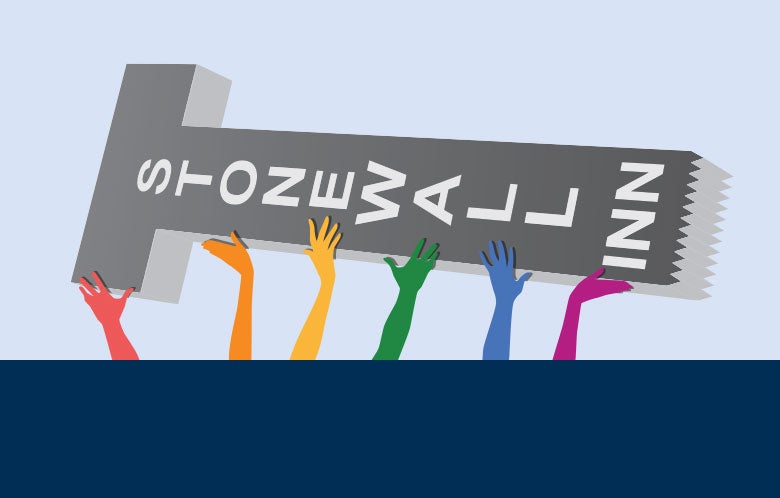On June 12, 2016, while Gay Pride celebrations reveled across the country, a gunman opened fire inside a gay nightclub and massacred over 50 people in Orlando, Fla. Nearly 50 years ago, before Pride celebrations were even a blip on anyone’s radar, police raided a gay bar, supposedly for serving liquor without a license, and days of riots ensued. This month, as a campaign is underway for President Obama to name the Stonewall Inn a National Monument, EBSCO librarians Gabi Toth and Henry Armitage from the Core Collections and History Reference Center teams decided to take a look at the Stonewall Riots and the ensuing gay liberation movement.
In June of 1969, police raids on gay bars were frequent. During that time period, it was illegal to cross-dress or dance with a partner of the same sex. Police would often raid and subsequently close down gay bars and clubs. The close-knit community of gay men, drag queens and lesbians had had enough by the time the police attempted to shut down Stonewall. As patrons of the bar were arrested and hauled into police vans by the cops, a crowd gathered and started throwing objects, flames and coins at the police, who barricaded themselves inside the bar. The beloved space was no longer safe for its patrons to be themselves, and days of riots, protests and arguments with the police continued. One year later, the first Gay Pride Marches assembled in New York and Los Angeles.
Reflective of the time period, after the riots, the Deputy Police Chief of New York City had this to say: “For those of us in [the] public morals [division], things were completely changed ... Suddenly they were not submissive anymore.” Some four months after the riots, national news media began to take notice, and publications such as Time Magazine and Newsweek were writing articles detailing the rise of gay culture. In the aftermath of the riots, in October 1969, Time published an article titled “The Homosexual: Newly Visible, Newly Understood.” The author (who is not named) mentions what were then called “homophile organizations,” the culture of “fag hags,” and even a computer dating service. Although the article was not entirely favorable towards the new culture of out and proud gays (the author wonders whether there is a gay conspiracy to take over the media and theater), it was one of the first of its kind.
The legacy of Stonewall remains strong and still incites the fight for gay rights. In 2010, in a speech he made to LGBT activists during Pride Month, President Obama affirmed his commitment to repealing unfair laws (i.e. Don’t Ask Don’t Tell), making sure LGBT partners are afforded the same rights as straight couples, and passing hate crime legislation (the Matthew Shephard act). The events of Stonewall are often credited for paving the way to the reforms listed above, as well as the repeal of DOMA and the legalization of same-sex marriage across the US.
President Obama also became the first president to address the GLBT community in an inaugural address, saying, “We, the people, declare today that the most evident of truths — that all of us are created equal — is the star that guides us still, just as it guided our forebears through Seneca Falls, and Selma and Stonewall. . . Our journey is not complete until our gay brothers and sisters are treated like anyone else under the law.” In just 40 years, the events of Stonewall changed cultural thinking from referring to homosexuals as “militants” and “inverts,” to our President declaring his commitment to equal rights. However, with hate crimes still abounding, the fervor that fueled the spirit of the Stonewall Riots is alive and well.
Below are some books recommended by Core Collections as well as articles for further reading from History Reference Center.

Stonewall: Breaking out in the fight for gay rights by Ann Bausum
Author Ann Bausum presents this “exploration of the Stonewall Riots and the national Gay Rights movement that followed. In 1969 being gay in the United States was a criminal offense. It meant living a closeted life or surviving on the fringes of society. The Stonewall Inn, a Mafia-run, filthy, overpriced bar in New York City’s Greenwich Village, was one of them.” (Publisher’s note)

Stonewall: the riots that sparked the gay revolution by David Carter
“In 1969, a series of riots over police action against The Stonewall Inn, a gay bar in New York City’s Greenwich Village, changed the longtime landscape of the homosexual in society literally overnight. Since then the event itself has become the stuff of legend, with relatively little hard information available on the riots themselves. Now, based on hundreds of interviews, an exhaustive search of public and previously sealed files, and over a decade of intensive research into the history and the topic, Stonewall: The Riots That Sparked the Gay Revolution brings this singular event to vivid life in this, the definitive story of one of history’s most singular events. A Randy Shilts / Publishing Triangle Award Finalist.” (Publisher’s note)

And Then I Danced by Mark Segal
In this memoir author Mark Segal “describes his firsthand experience as a teenager inside the Stonewall bar during the historic riots, his participation with the Gay Liberation Front, and amusing encounters with Elton John and Patti LaBelle.” (Kirkus Reviews)

The gay revolution: the story of the struggle by Lillian Faderman
This book, by Lillian Faderman, presents the “story of the modern struggle for gay, lesbian, and trans rights—from the 1950s to the present—based on . . . interviews with politicians, military figures, legal activists, and members of the entire LGBT community who face these challenges every day.” (Publisher’s note)
Resources used:
Cloud, J. (2003). Standing Up for Gay Rights. Time, 161(13), A51. (History Reference Center)
Cusac, A. (1999). The Promise of Stonewall. Progressive, 63(8), 10. (History Reference Center)
Turner, T., & Deaderick, S. (1997). The Gay Liberation Movement. Gay Resistance: The Hidden History, 39-45. (History Reference Center)
Obama, B. H. (2010). Remarks at a Reception Honoring Lesbian, Gay, Bisexual, and Transgender Pride Month. Daily Compilation Of Presidential Documents, 1. (History Reference Center)
The Homosexual: Newly Visible, Newly Understood. (1969). Time, 94(18), 60. (MasterFile)
Knickerbocker, B. (2014, June 29). ‘Gay Pride’ events celebrate a year of advancement for gay rights. Christian Science Monitor. p. N.PAG. (History Reference Center)
For further reading from History Reference Center:
Grabarek, D. (2015). Takin’ It to the Streets. School Library Journal, 61(6), 42.
Begala, P. (2013). Gaga Over Gay. Newsweek Global, 161(4), 1.
Gay-rights movement. (2016). Columbia Electronic Encyclopedia, 6th Edition, 1-2.
